What is a Fresnel light and how do you use one?
Fresnel lights originally came from lighthouses, but that doesn’t mean you should throw them into the sea. Learn all about their usage, variations, lenses, and more.
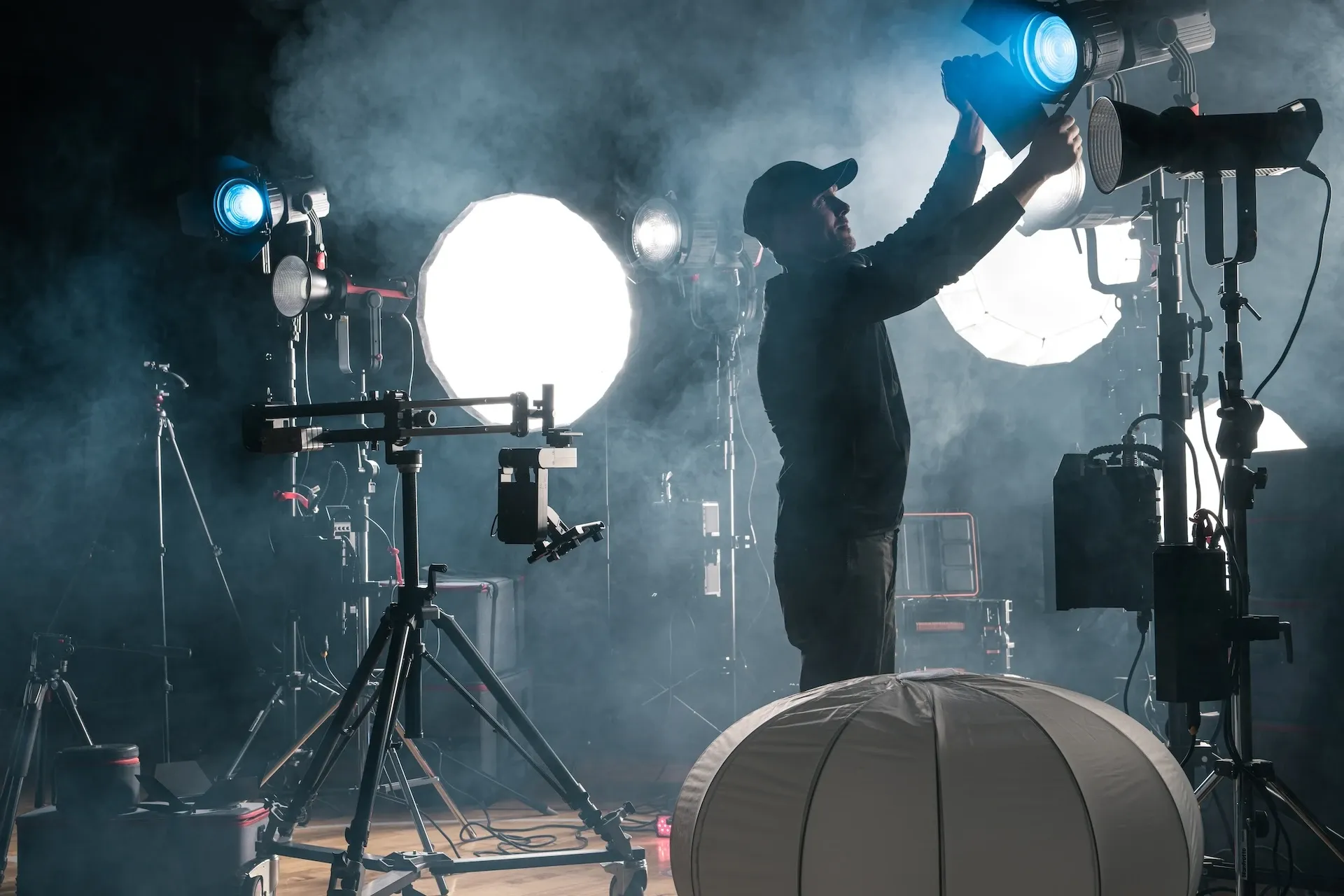
Fresnel lights originally came from lighthouses, but that doesn’t mean you should throw them into the sea — they can add an extra sparkle to your content. Learn all about their usage, variations, lenses, and more.
Today, we’ll cover:
- What is a Fresnel light?
- What is a Fresnel lens?
- How does a Fresnel light work?
- What is a Fresnel light used for?
- Are Fresnel lights hard or soft?
- Is a Fresnel light a floodlight?
- Is a Fresnel light a spotlight?
- What are the different kinds of Fresnel lights?
- Are there any downsides to using a Fresnel light?
What is a Fresnel light?
The Fresnel light comprises a lamp housed in a box, sitting between a reflector and Fresnel lens — more on that lens in a moment. It was developed by and named after Augustin-Jean Fresnel, a civil engineer and physicist working in the 1820s.
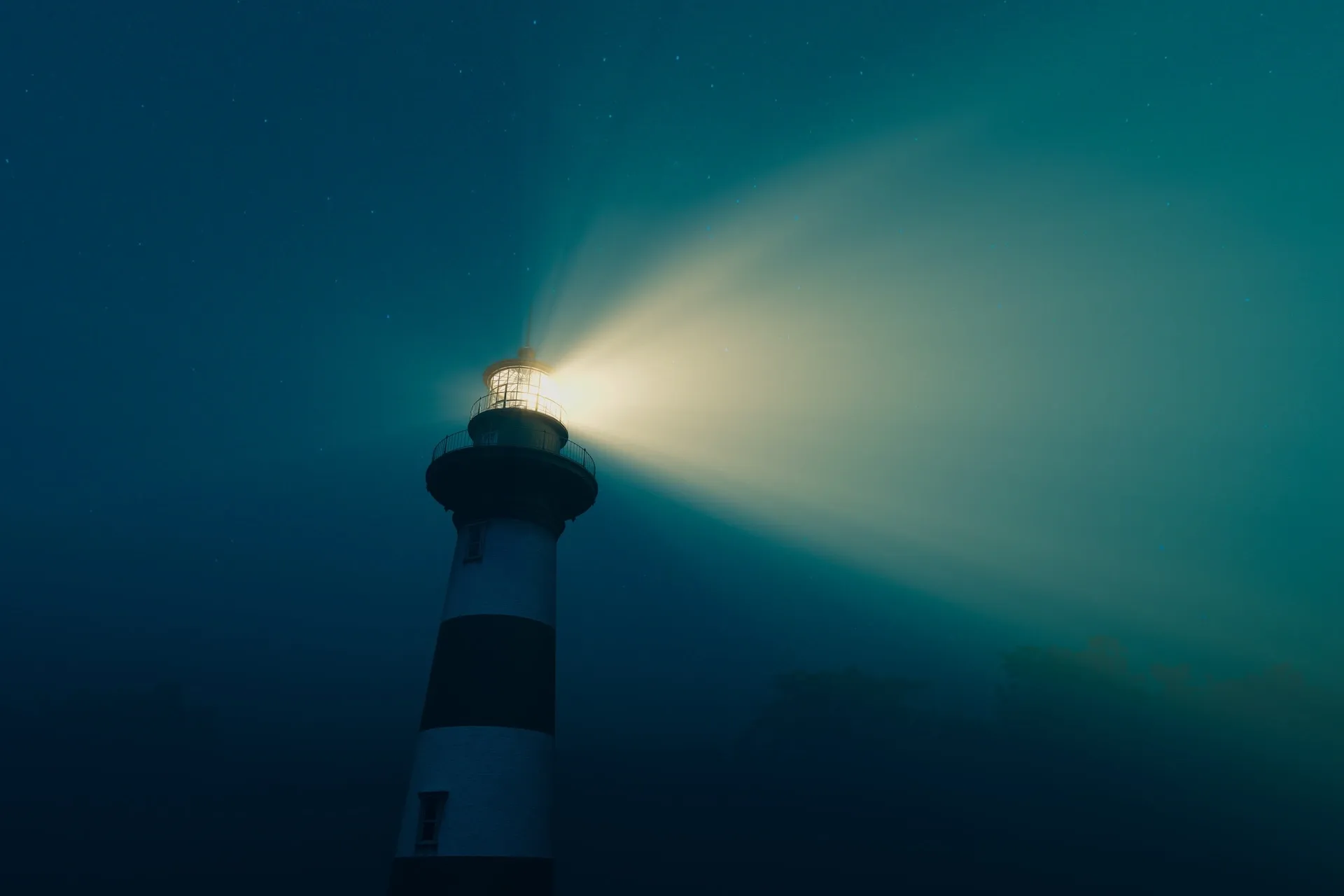
Fresnel’s creations were initially used to improve visibility from lighthouses, but have since been adopted by theaters, filmmakers, and even car headlights. They offer a softer, washy lighting alternative, which can be used for both technical and artistic purposes.
What is a Fresnel lens?
The Fresnel lens is the secret sauce that makes the Fresnel light so special. In a nutshell, a Fresnel lens is a lightweight lens with circular grooves carved into the plastic, rather than a regular lens’ flat, curved surface.
Each groove is smaller than the last — a little like the rings in a tree trunk — with each bending the light further and further. This results in a concentrated, controllable light beam, which is what ol’ Fresnel used to alert sailors passing near lighthouses.
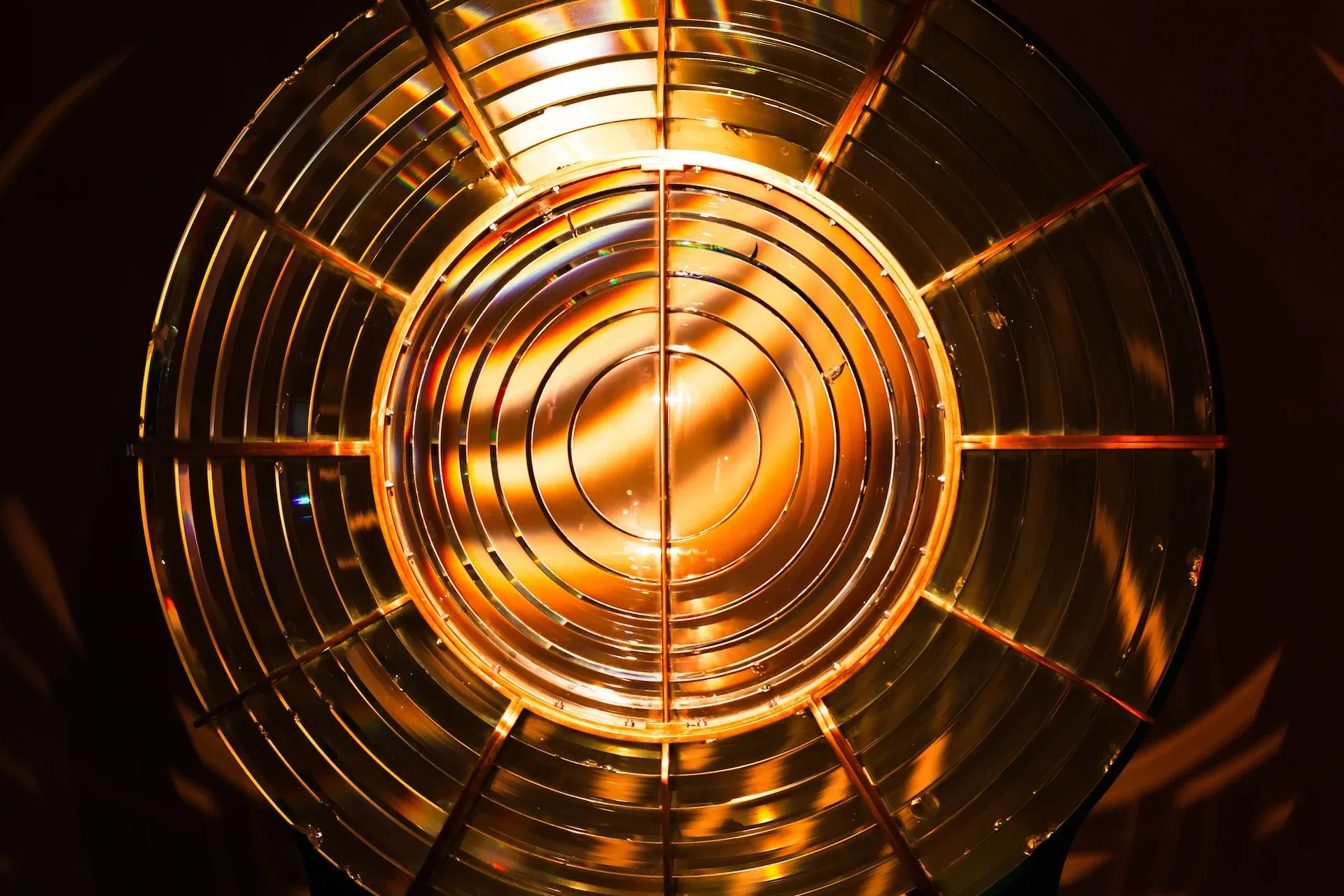
How does a Fresnel light work?
As we touched on earlier, the lamp within a Fresnel light is nestled in a box with a reflector and Fresnel lens. The light from the lamp hits the reflector, which then projects onto the lens and produces the famous Fresnel beam.
The lamp and reflector sit on a movable track, meaning that the beam can be adjusted, usually by a slide or screw mechanism. The closer you move the lamp and reflector to the Fresnel lens, the wider the beam becomes — if you move the lamp further away from the lens, the beam gets narrower. The beam can also be shaped by ‘barn doors,’ which are foldable shapes attached to the front sides of the Fresnel light.
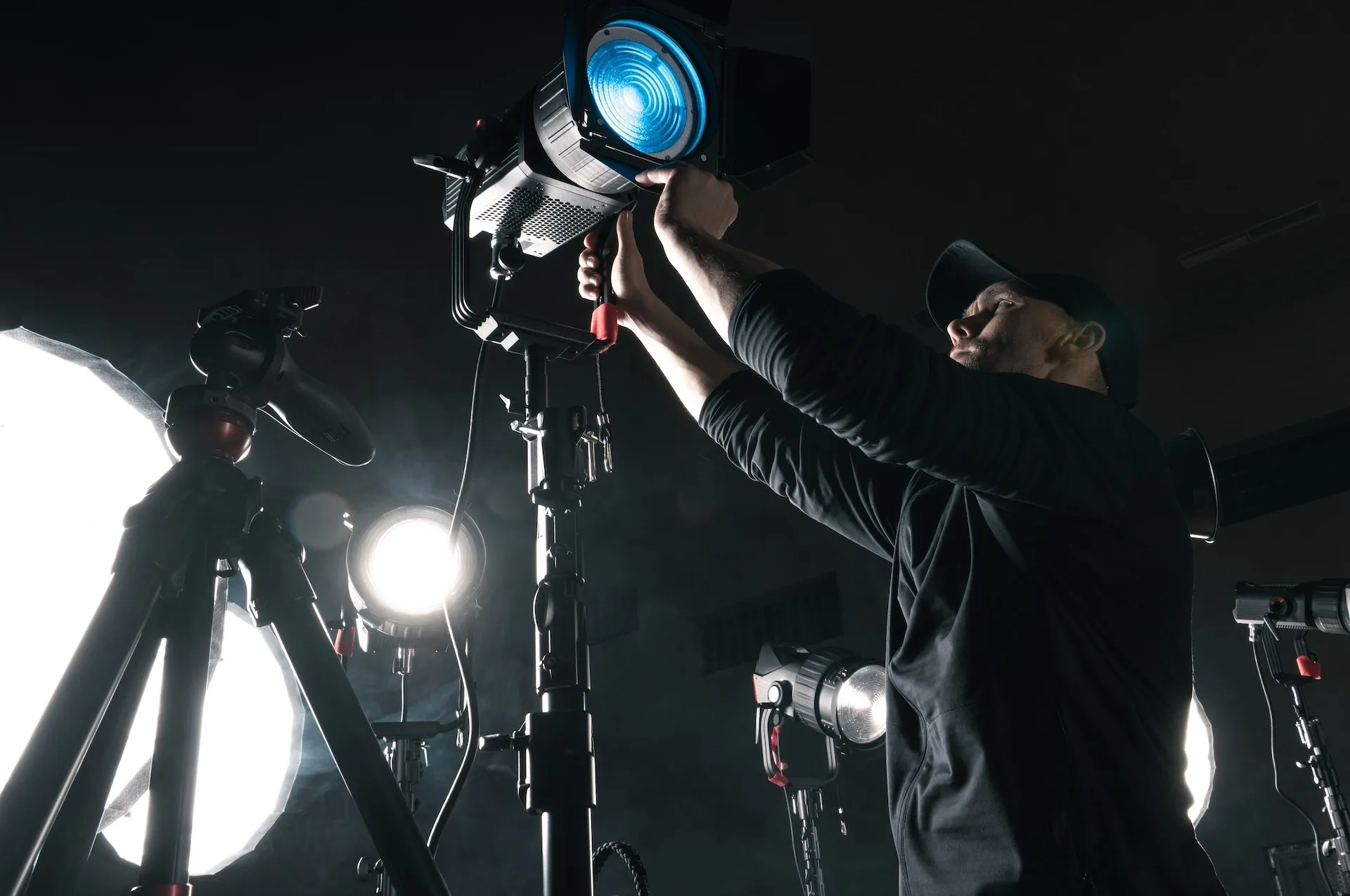
What is a Fresnel light used for?
Fresnel lighting instruments are most often used for theater, television, film, and professional online content. You’ll likely see them used as part of a three- or four-point lighting setup — any high-profile television interview you can think of was probably lit with Fresnel. Given how versatile fresnel lenses and lights are, they can be used for fill lighting, backlighting, high-key and low-key lighting, and more.
While technically sound, Fresnel lighting can also give your content an artier vibe. Throwing a wide Fresnel light onto a product or smaller subject can make for a more interesting composition. Fresnel lights are often hung on a rig or fixed to a stand, as they’re heavy, awkward to operate, and hot to the touch when in use.
Fresnel lights can give your content diversity, depth, color. Music can do the same. Check out Epidemic Sound’s catalog of more than 50,000 tracks and 200,000 unique sound effects and variations below.

Are Fresnel lights hard or soft?
Fresnel lights produce soft light, as the beam’s intensity is spread out evenly.
Is a Fresnel light a floodlight?
A Fresnel light is not the same as a floodlight. While a Fresnel can throw out wide beams, there is a difference — floodlights offer no adjustment, and are used to light up scenery and background rather than subjects. Fresnel lights can provide similar coverage to a floodlight, but are more versatile.
Is a Fresnel light a spotlight?
Fresnel lights and spotlights are different — Fresnel lights can do the spotlight shtick, but are conveniently adjustable. They’re also softer than spotlights.
What are the different kinds of Fresnel lights?
Fresnel lights might look the same to passers-by, but there are several different types available.
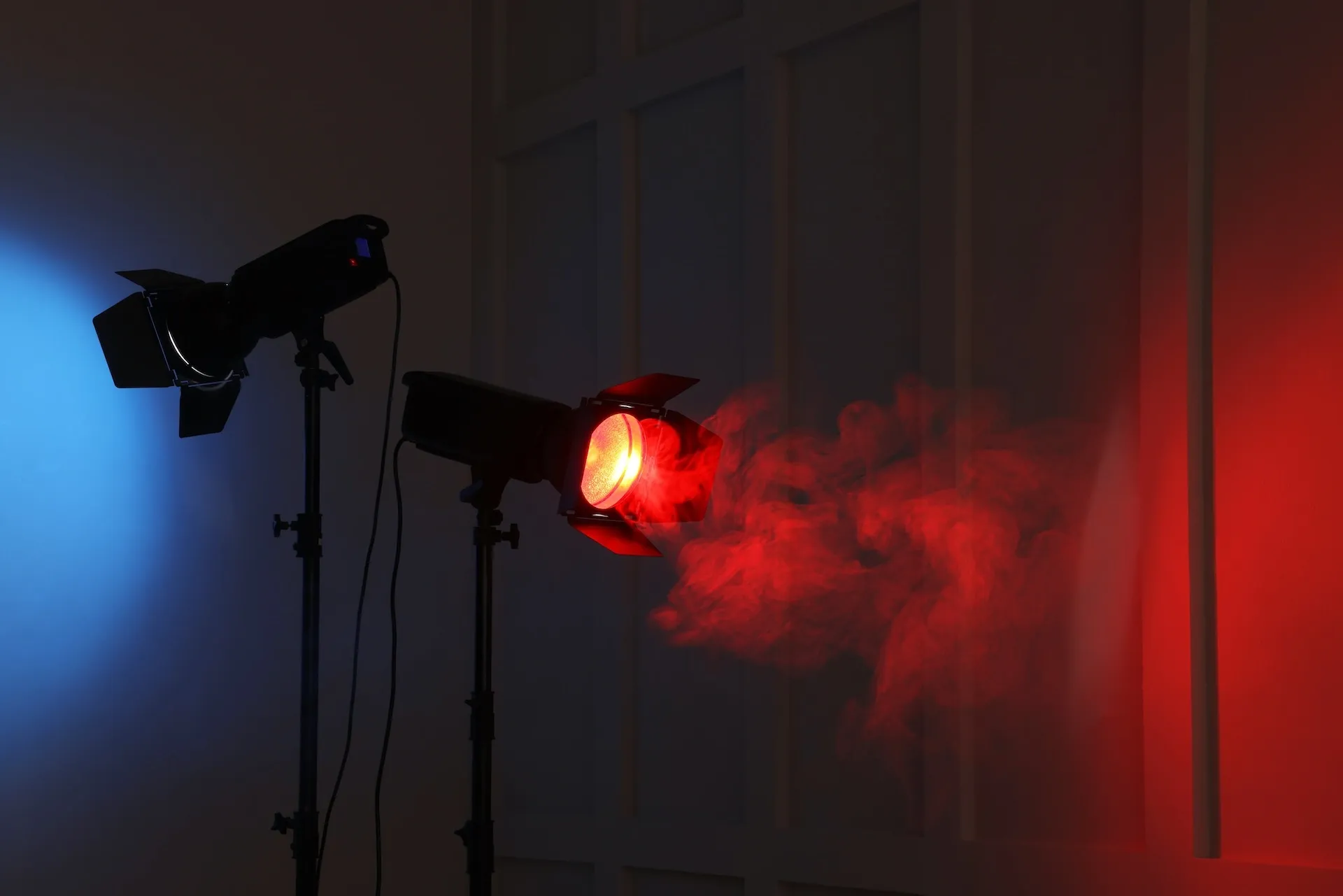
Tungsten Fresnel lights
Tungsten Fresnel lights use lamps made with tungsten metal filaments. Their color temperature of around 3,200K (Kelvin) emits a warm, yellow-tinged light, which is preferred for indoor shoots. Tungsten Fresnel lights are less energy-efficient than the lights we’ve listed below, and also tend to get hotter.
HMI Fresnel lights
HMI Fresnel lights are daylight-balanced and more natural-looking, boasting a color temperature of around 5,600K. This makes them ideal for outdoor shoots, or scenes in which you’d like to create a ‘natural’ feel. HMI Fresnel lights are generally more expensive than their tungsten counterparts.
LED Fresnel lights
LED Fresnel lights offer more energy efficiency and color temperatures. Being LED, they can be dimmed without affecting the color temperature, and can be colored in pretty much any shade you can think of. They’re also more affordable than HMI and tungsten Fresnel lights.
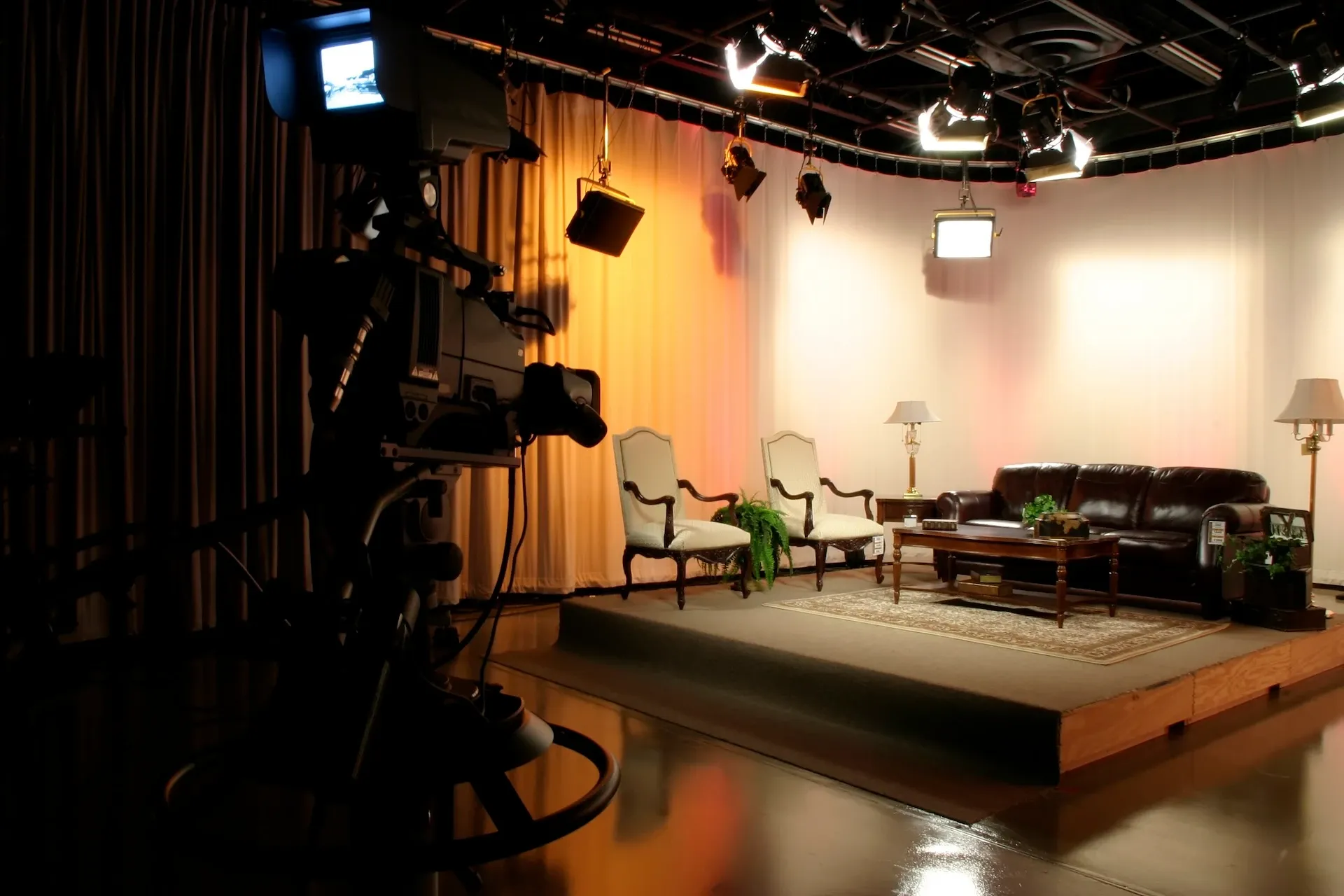
Are there any downsides to using a Fresnel light?
We don’t want to end things on a bummer, but we have been singing Fresnel lights’ praises for the majority of this article. So, to wrap things up: what are the downsides to using a Fresnel light?
- They’re expensive: If you’re on a tight budget or have limited time, splashing out on a Fresnel or three might seem out of reach.
- They’re heavy: This makes them tricky to transport. They’re great for studio sessions, but won’t be practical if you’re shooting footage on the fly.
- They take time: You’ll have to leave a Fresnel light to cool down after usage — again, this doesn’t make them appealing for quick-fire shoots.
- They can be dangerous: We’ve mentioned that Fresnel lights get warm, and we weren’t joking! If touched while hot, they can leave an impressive burn — always wear heat-resistant gloves to be on the safe side.
- They can be fragile: Gloves are useful for more than just protecting your fingers. Every time you touch a Fresnel lamp, you’ll leave behind a fingerprint — like you would on a laptop or smartphone. The oil from those fingerprints will build up the more the light is handled, and they’ll heat up when the lamp is on. Eventually, the lamp may explode.
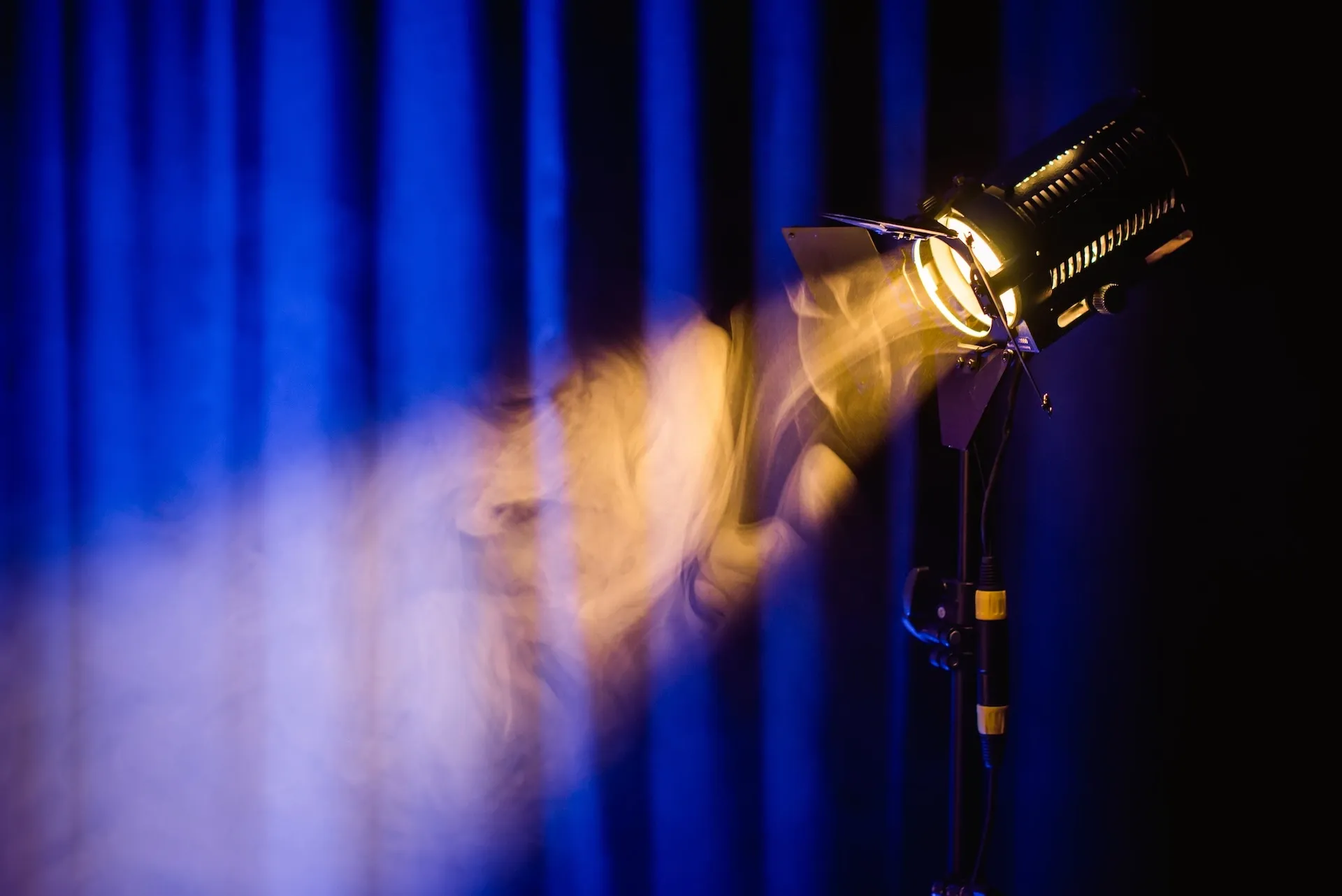
So, those were the key details about all things Fresnel. They’re versatile, unique lights that can give your content that extra shine. If you’re looking for other ways to take your projects to the next level, don’t forget the music — after all, the soundtrack can make or break your content. Don’t settle for second-best.
Our catalog is high-quality, affordable, and safe. An Epidemic Sound subscription goes beyond royalty-free music, removing the headache of licensing and freeing you up to do what you do best. You can enjoy the safety of our license hand-in-hand with our massive catalog of 50,000 tracks, covering just about every genre you can think of. You’ll also gain unlimited access to our advanced search functions — finding the right sound’s never been easier.
It’s better than royalty-free. It’s worry-free. Get started with Epidemic Sound below.

Are you a filmmaker? We've got you covered with background music for videos, including:
Take your video editing to the next level with our massive catalog of music for filmmakers.

